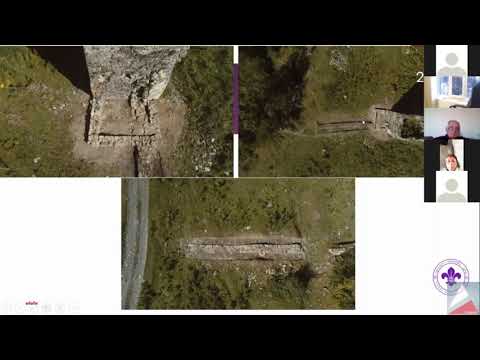Surami Fortress / სურამის ციხე / Крепость Сурами / - Georgia, 4K aerial video footage DJI Inspire 1
Surami Fortress Subsequently, Surami declined but retained its lively trading post as well as the fortress which was reconstructed in the 16th and 17th centuries. By the mid-18th century, according to Prince Vakhushti, Surami had 200 households of Georgians, Armenians and Jews. In the 1740s, Surami was used by Prince Givi Amilakhvari as his base against King Teimuraz II and Persians. After the prince’s surrender in 1745, the fortress was demolished, but later restored and exploited by the Russo-Georgian troops in anti-Ottoman operations during the Russo-Turkish War (1768–1774). After the Russian annexation of Georgia in 1801, Surami housed a military post and was later popularized as a mountain climatic resort. In 1926, it acquired the status of "urban-type settlement" The Legend of the Suram Fortress An old legend has it that the walls of the Surami Fortress owe their sturdiness to the fact that they have a man buried within them – a mother’s only child by the name of Zurab. According to the legend’s narrative, the original builders had constant trouble putting up the walls of the fortress. No matter how well they built it, the walls kept crumbling for no apparent reason. A fortune-teller told them that the walls would not hold unless a young man, an only child, was bricked up within them. It was very hard for Zurab’s mother to part with her son, but she agreed to it out of love for her homeland (and a probably touch of old-fashioned pagan beliefs). She was present as her son was being buried alive by workers, calling to him until he was no longer able to respond. True to the prophecy, the walls of the fortress held after Zurab’s sacrifice. Goole Map: https://www.google.ge/maps/place/sura... Like us on Facebook! ► / discoverygalaxy Follow us on Google + ► https://plus.google.com/+AerialExplorer Follow us on Twitter ► / aerialexplorer Music: zero-project - For the love of the Wood Elf Princess
Aerial Explorer-ის სხვა ვიდეოები

Gremi fortress / გრემის ციხე / Крепость Греми / -...

Ujarma Fortress / უჯარმის ციხე / Крепость Уджарма...
 03:47
03:47
Bagrati Cathedral / ბაგრატის ტაძარი / Храм Баграта...
 03:52
03:52
Zarzma Monastery / ზარზმის მონასტერი / Монастырь З...
 03:58
03:58
Aspindza Fortress / ასპინძის ციხე / Крепость Аспин...
 11:53
11:53
Khikhani Fortress / ხიხანის ციხე / Крепость Хихани...
 08:14
08:14
Khertvisi Fortress / ხერთვისის ციხე / Крепость Хер...
 05:20
05:20
Petra Fortress / პეტრას ციხე / Крепостъ Петра / -...

მსგავსი ვიდეოები

სურამის ციხე - Surami Fortress
Lado Gogoladze

სურამის ციხესა და საბუეს სამონასტრო კომპლექსზე ჩატარებული არ...
Lado Gogoladze

სურამის ციხის არქეოლოგიური კვლევა
Lado Gogoladze

ამბავი სურამის ციხისა(ქართულად)/THE LEGEND OF THE SURAM FORT...
saba makharashvili

დ. თორაძე."გორდა". ვ. ჭაბუკიანის ქორეოგრაფია. D. Toradze. Go...
State Ballet of Georgia

მდინარე პატარა ენგური, ზუგდიდი - ჯვარი - მესტია - ლასდილი #g...
GET VIP DRIVE TOURS

სურამი
Mari Tefnadze

ბუნებრივი აირის მრიცხველები
info9 info99